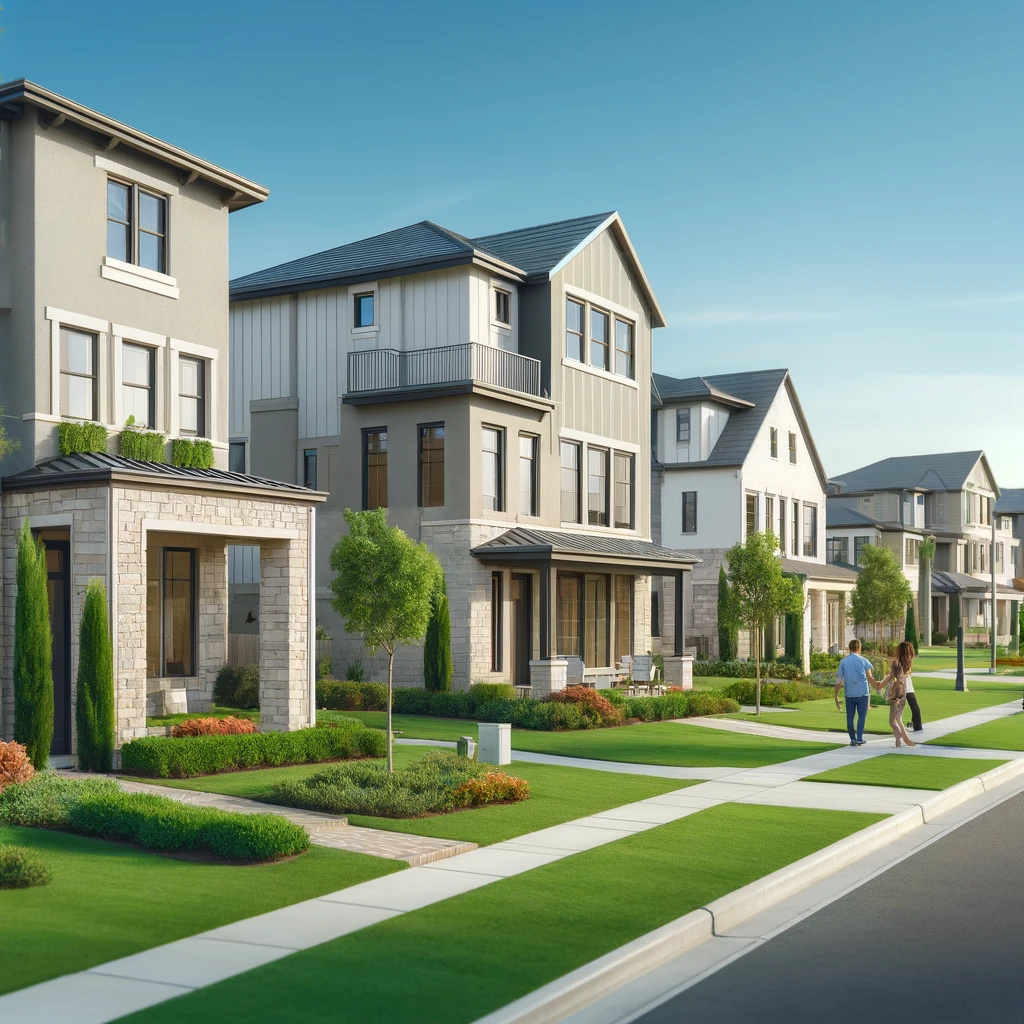Buying a home in a new development can feel like an exciting opportunity—brand-new construction, modern amenities, and the chance to be part of a growing community. But with so many options available, particularly in a competitive market like Seattle, it’s crucial to know what to look for to ensure you’re making a sound investment. New homes can offer sleek finishes and contemporary layouts, but without careful consideration, you might end up with a home that doesn’t meet your long-term needs or even worse, doesn’t appreciate in value.
This guide is designed to give you insightful, practical tips for evaluating new development homes, so you can identify the key features that offer not only immediate comfort but also future value.
1. Location Matters—Even in New Developments
It’s easy to get swept up by a new development’s brand-new homes and modern layouts, but remember that location is still king when it comes to real estate. Even if everything inside the house is perfect, if the development isn’t in a desirable or convenient area, its value could stagnate over time.
- Proximity to Key Amenities: Consider the community’s proximity to schools, grocery stores, restaurants, and public transportation. Even if the development promises to build these amenities in the future, it’s important to factor in whether they’ll be accessible right away. Being part of a new community is great, but having to drive miles for basic conveniences can become a frustration.
- Growth Potential: Look for signs that the area surrounding the development is growing. Are businesses moving in? Is there planned infrastructure development, such as new roads or transit options? An area on the cusp of development means that you’re likely to see property values rise as the neighborhood becomes more established.
Pro Insight: New developments in areas like North Seattle or Bothell are especially appealing due to their proximity to tech hubs and upcoming infrastructure projects. These areas are poised for future growth, making them solid investments for long-term value appreciation.
2. Builder Reputation: A Key Indicator of Quality
Not all builders are created equal. The reputation of the developer behind a new home development is a critical factor to consider. A builder with a track record of quality construction and reliability can make all the difference in how your home performs over time.
- Research the Builder: Look up the builder’s history and reputation. Check online reviews, ask for references, and even visit other communities they’ve built. Be wary of developers with numerous complaints or homes with structural issues.
- Warranty and Support: Find out what kind of warranty the builder offers. Many new homes come with warranties that cover structural issues for 10 years and systems like plumbing or electrical for 2-5 years. Make sure you understand what’s covered and for how long. Also, ask how the builder handles issues after move-in. A builder with a poor track record of customer service can turn your dream home into a nightmare.
Pro Insight: Some of the most reliable builders in the Greater Seattle area include Polygon Northwest and MainVue Homes, known for their quality craftsmanship and excellent customer service. Working with a reputable builder gives you peace of mind and ensures your investment holds up over time.
3. Design Features that Add Value
When you’re buying a new construction home, it’s easy to get dazzled by shiny new features. But it’s crucial to focus on design elements that not only appeal to your personal taste but also add long-term value to your home. Here are some features that tend to boost value in Seattle’s market:
- Open-Concept Layouts: Homes with open floor plans are in high demand, especially among millennial and Gen Z buyers who prefer flexible, multi-functional spaces. An open layout allows for better flow between the kitchen, dining, and living areas, creating a more connected living environment.
- Energy-Efficient Features: Seattle buyers care about sustainability. Look for homes that offer energy-efficient appliances, solar panels, smart thermostats, and high-performance windows. These features not only reduce your carbon footprint but also lower your utility bills, making them attractive to future buyers.
- Home Office Space: With the rise of remote work, having a dedicated office space is more important than ever. Homes that offer functional, private office spaces are highly appealing in today’s market. Even if the home doesn’t come with a designated office, ensure there’s enough flexibility in the layout to create one.
Pro Tip: Smart home technology is increasingly becoming a must-have for Seattle buyers. Homes equipped with smart lighting, security systems, and voice-activated controls will stand out and command higher prices down the line.
4. Community Amenities and Development Plans
A new home isn’t just about the property itself—it’s about the community around it. New developments often come with a host of amenities that can significantly boost the value and appeal of your home. But it’s important to understand whether these amenities will be ready when you move in or if they’re still in the planning stages.
- Planned vs. Existing Amenities: If the development advertises amenities like parks, pools, fitness centers, or schools, make sure to ask if they’ll be ready by the time you move in or if you’ll have to wait. Developments with existing amenities tend to retain higher property values and attract more buyers, while developments with promises of future amenities can experience delays.
- HOA and Community Rules: Understand the Homeowners Association (HOA) fees and rules. While some amenities can make life more enjoyable, high HOA fees can cut into your budget, and overly restrictive rules can limit your ability to modify or personalize your home.
Pro Insight: Communities like Ten Trails in Black Diamond offer an all-inclusive lifestyle with immediate access to parks, schools, and shops. Developments that deliver on amenities from day one tend to see higher resale values and are more appealing to buyers in competitive markets.
5. Long-Term Appreciation Potential
While new developments offer a fresh start, it’s important to consider whether your home will appreciate in value over time. Unlike older homes in established neighborhoods, new developments can sometimes take longer to build equity, especially if they’re located in areas still undergoing growth.
- Supply and Demand: One of the risks with new developments is oversupply. If the builder continues to release new homes in phases over the next several years, you could face stiff competition when you decide to sell. Be sure to check how many homes are planned for the community and how quickly they’re being built.
- Future Growth: Evaluate the potential for future growth in the surrounding area. Developments in areas where job growth, infrastructure, and public services are improving are more likely to appreciate quickly. Master-planned communities that offer a mix of housing types, retail, and public spaces tend to retain their value better than smaller, isolated developments.
Pro Insight: Focus on developments that are close to growing tech hubs, like Bothell or Redmond Ridge. Homes in these areas benefit from proximity to major employers like Microsoft and Amazon, increasing their appreciation potential as demand for housing grows.
6. Construction Timeline and Builder Reliability
One of the most important considerations when buying a home in a new development is understanding the construction timeline. Whether the home is move-in ready or will be completed in the near future, it’s crucial to have clear expectations.
- Expected Completion Date: Ask your builder for a firm completion date and request updates throughout the process. Weather delays, labor shortages, and other unforeseen circumstances can push back your move-in date significantly. In Seattle, where rainy conditions can stall construction, it’s common for timelines to be delayed.
- Phased Developments: Some new communities are built in phases. If you’re moving into a home in the first phase, you might find yourself living in a construction zone for a few years as the rest of the community is completed. While this means you’re getting in early at a lower price, it can also mean noise, dust, and ongoing disruption.
Pro Insight: Make sure to get any promises regarding completion dates and features in writing. This ensures you have recourse if the builder’s timeline slips or if promised amenities are delayed.
Conclusion
Buying a home in a new development comes with a lot of advantages—modern design, energy efficiency, and the opportunity to be part of a growing community. But it’s essential to go beyond the excitement of new construction and carefully evaluate the location, builder reputation, design features, and community amenities before making a purchase.
By focusing on long-term appreciation potential and understanding the specifics of the development, you can ensure that your investment grows over time. In a competitive market like Seattle’s, where new developments are popping up frequently, knowing what to look for can make all the difference between a home that retains its value and one that struggles to keep up.





